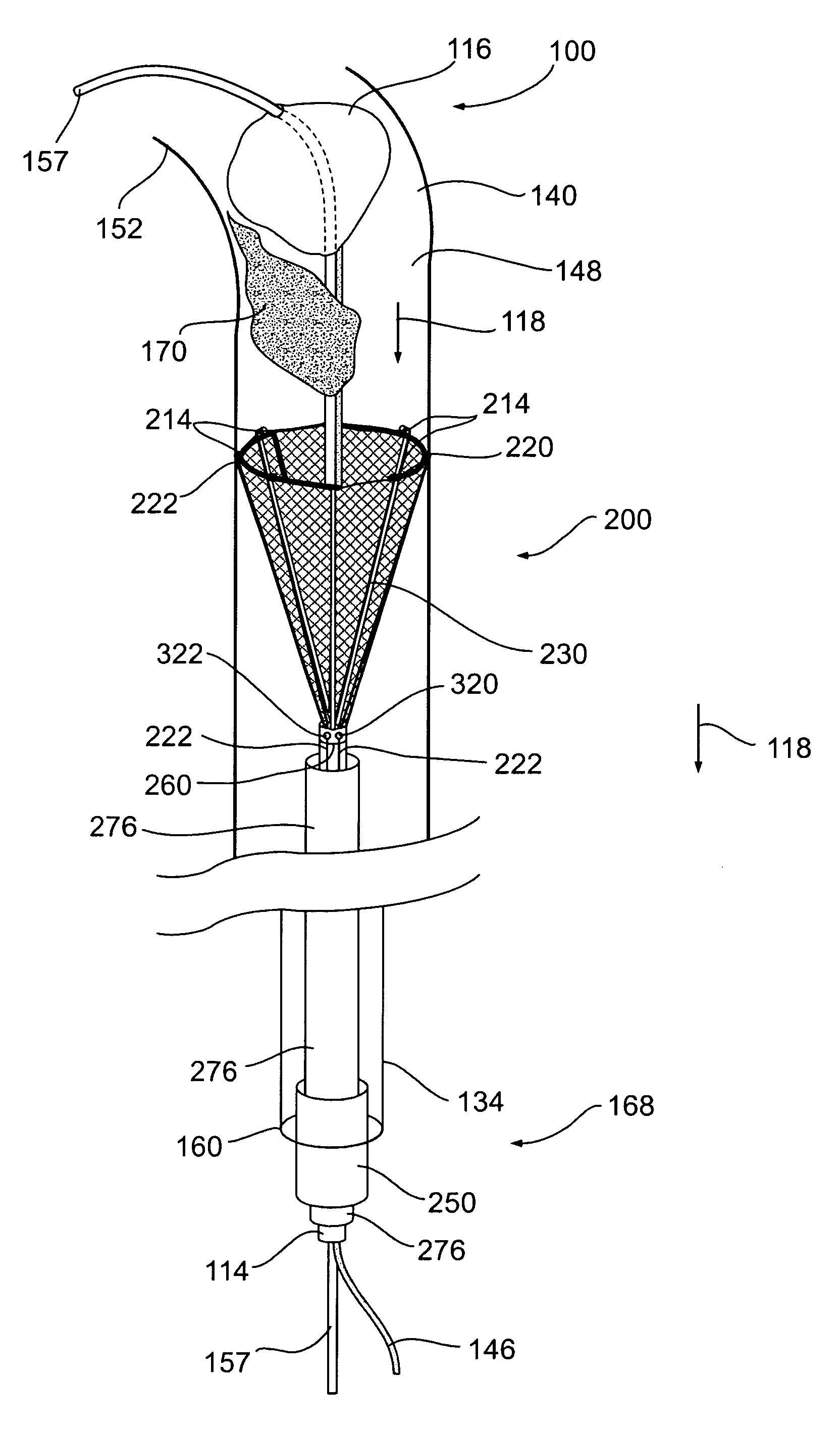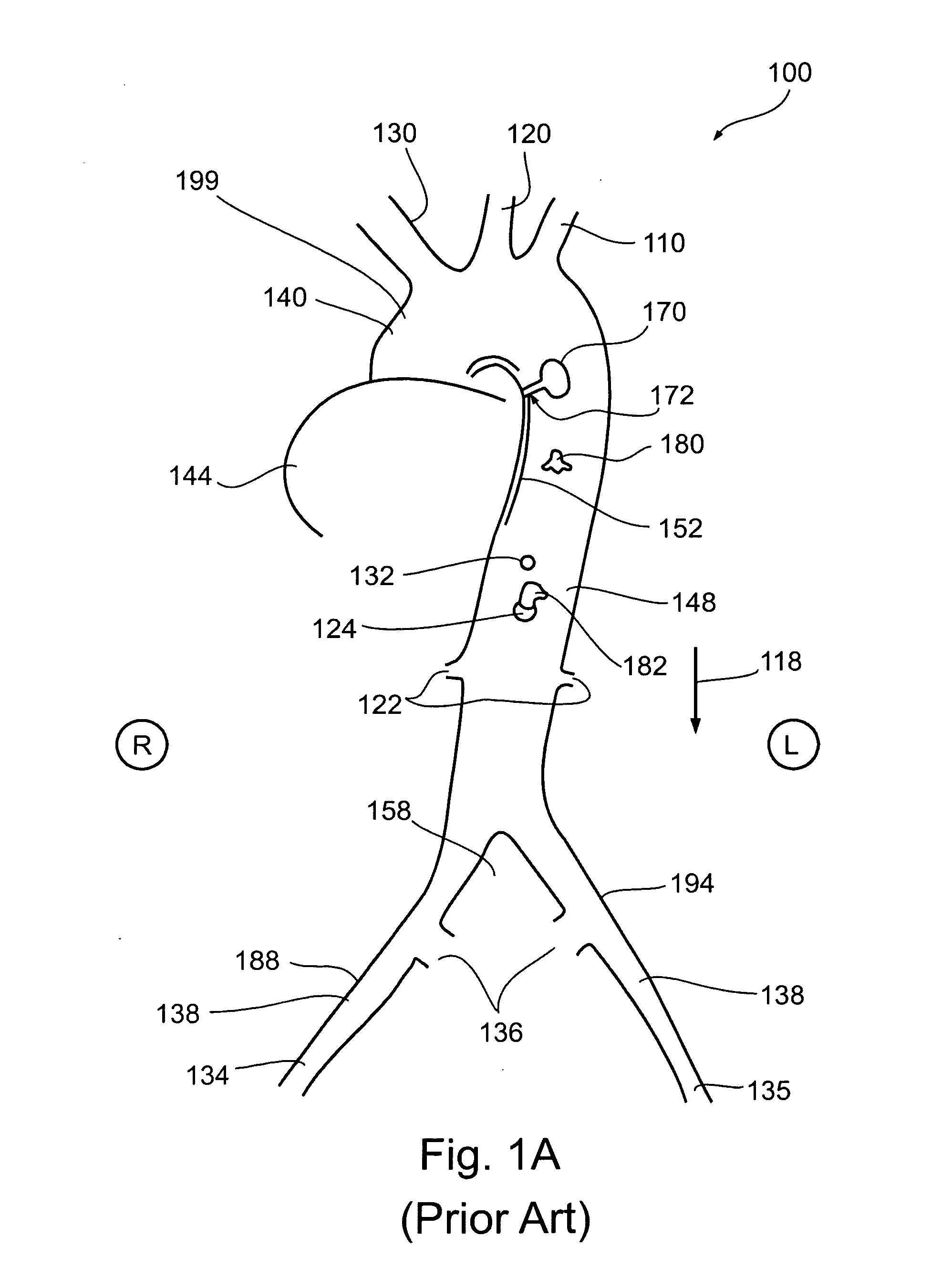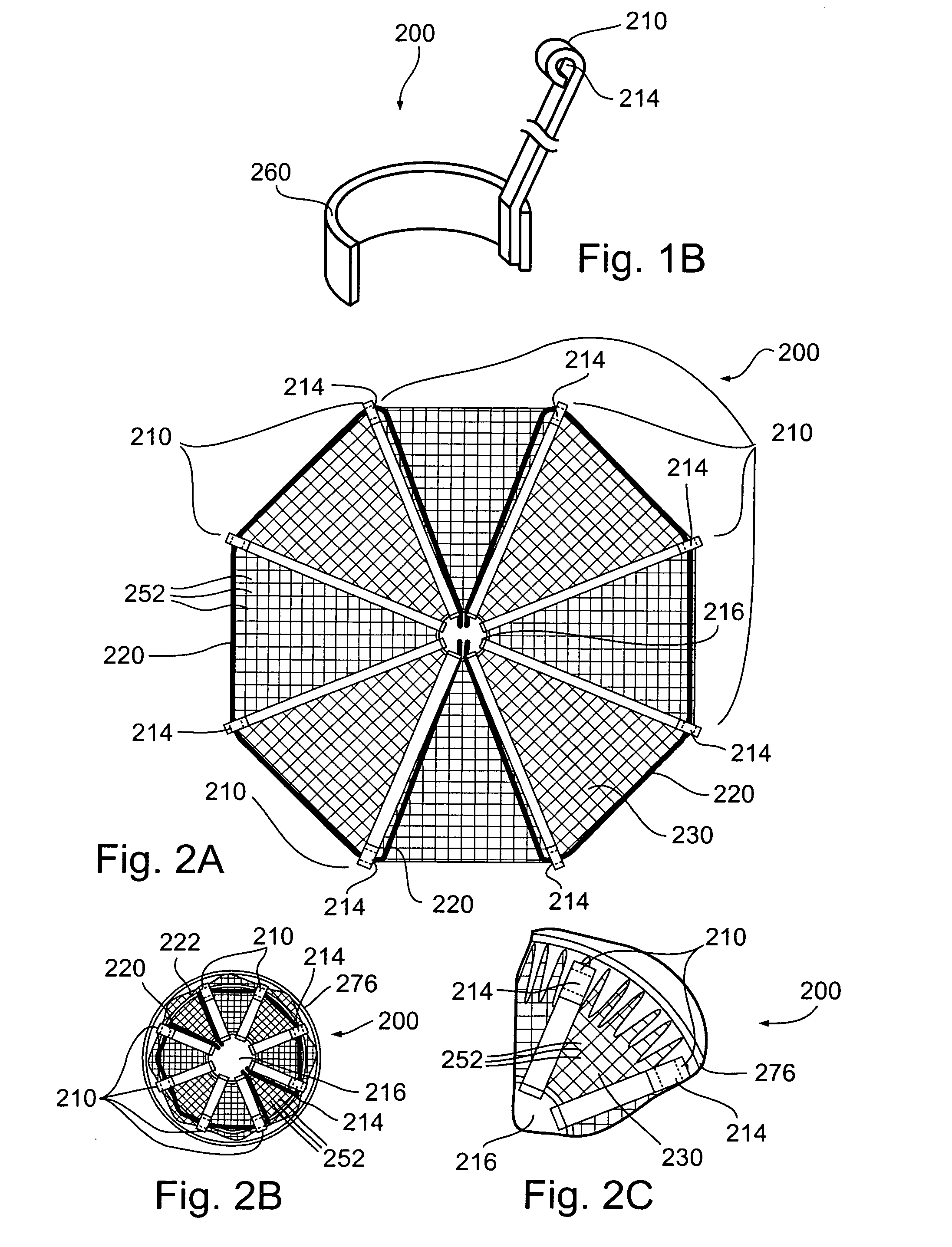Intraluminal Mass Collector
a technology of mass collectors and collectors, applied in the field of intraluminal mass collectors, can solve the problems affecting the effect of dilating, discharging, and discharging, and achieving the effect of reducing the diameter of the intraluminal mass
- Summary
- Abstract
- Description
- Claims
- Application Information
AI Technical Summary
Benefits of technology
Problems solved by technology
Method used
Image
Examples
Embodiment Construction
[0060]In broad terms, the present invention relates to an apparatus for disconnecting, collecting and removing an AAPT using a minimally invasive vascular surgical technique.
[0061]The principles and uses of the teachings of the present invention may be better understood with reference to the accompanying description, figures and examples. In the figures, like reference numerals refer to like parts throughout.
[0062]Before explaining at least one embodiment of the invention in detail, it is to be understood that the invention is not limited in its application to the details set forth herein. The invention can be implemented with other embodiments and can be practiced or carried out in various ways. It is also understood that the phraseology and terminology employed herein is for descriptive purpose and should not be regarded as limiting.
[0063]Generally, the nomenclature used herein and the laboratory procedures utilized in the present invention include techniques from the fields of bi...
PUM
 Login to View More
Login to View More Abstract
Description
Claims
Application Information
 Login to View More
Login to View More - R&D
- Intellectual Property
- Life Sciences
- Materials
- Tech Scout
- Unparalleled Data Quality
- Higher Quality Content
- 60% Fewer Hallucinations
Browse by: Latest US Patents, China's latest patents, Technical Efficacy Thesaurus, Application Domain, Technology Topic, Popular Technical Reports.
© 2025 PatSnap. All rights reserved.Legal|Privacy policy|Modern Slavery Act Transparency Statement|Sitemap|About US| Contact US: help@patsnap.com



